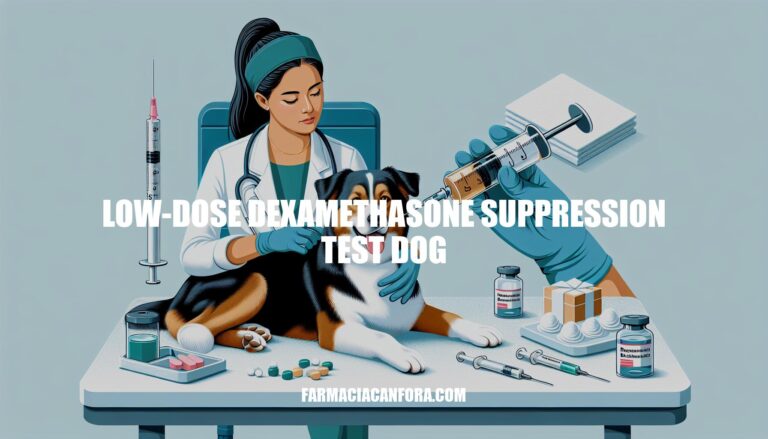


The low-dose dexamethasone suppression test (LDDST) is a diagnostic tool used in veterinary medicine to screen for Cushing’s disease (hyperadrenocorticism) in dogs. This test helps determine if a dog has an overproduction of cortisol, a hormone produced by the adrenal glands. By administering a low dose of dexamethasone, a synthetic cortisol, and measuring the cortisol levels in the blood at specific intervals, veterinarians can assess the function of the adrenal and pituitary glands. The LDDST is significant because it aids in the early detection and differentiation of Cushing’s disease, allowing for timely and appropriate treatment.
The low-dose dexamethasone suppression test (LDDST) is conducted in dogs for the following specific reasons:
Screening for Cushing’s Disease: The LDDST is primarily used to screen for hyperadrenocorticism (Cushing’s disease) by assessing the body’s cortisol regulation.
Evaluating Cortisol Suppression: In healthy dogs, dexamethasone suppresses cortisol production via a negative feedback loop. In dogs with Cushing’s disease, this suppression is impaired, indicating the presence of the disease.
Differentiating Types of Cushing’s Disease: The LDDST can help differentiate between pituitary-dependent and adrenal-dependent Cushing’s disease. If cortisol levels are not suppressed, it suggests Cushing’s disease, but further tests may be needed to determine the specific type.
Monitoring Disease Progression: The test can be used to monitor the effectiveness of treatment and disease progression in dogs already diagnosed with Cushing’s disease.
The LDDST involves taking blood samples before and after administering dexamethasone to measure cortisol levels at specific intervals.
Sure, here’s the step-by-step process for administering the low-dose dexamethasone suppression test to dogs:
Preparation:
Baseline Sample:
Dosage:
Timing of Blood Sample Collection:
This process helps in diagnosing conditions like Cushing’s syndrome by evaluating the cortisol levels at specified intervals after administering dexamethasone.
Here’s how to interpret the results of the low-dose dexamethasone suppression test in dogs:
Baseline Cortisol Level: A blood sample is taken before the dexamethasone injection to measure the initial cortisol level.
Post-Dexamethasone Cortisol Levels:
Interpreting the Results:
The low-dose dexamethasone suppression test (LDDST) is widely used to diagnose hyperadrenocorticism (Cushing’s disease) in dogs. Here are its key advantages and potential drawbacks:
The low-dose dexamethasone suppression test (LDDST) is a crucial diagnostic tool for veterinarians to screen for Cushing’s disease in dogs. It helps determine if a dog has an overproduction of cortisol, a hormone produced by the adrenal glands.
The LDDST involves administering a low dose of dexamethasone and measuring cortisol levels at specific intervals. This test aids in early detection and differentiation of Cushing’s disease, allowing for timely and appropriate treatment.
It is used to screen for hyperadrenocorticism (Cushing’s disease), evaluate cortisol suppression, differentiate between pituitary-dependent and adrenal-dependent Cushing’s disease, and monitor disease progression.
The LDDST involves taking blood samples before and after administering dexamethasone to measure cortisol levels at specific intervals. It is a non-invasive test that helps diagnose conditions like Cushing’s syndrome by evaluating cortisol levels at specified intervals after administering dexamethasone.
The results of the LDDST are interpreted based on baseline cortisol level, post-dexamethasone cortisol levels, and the dog’s response to the test. A normal response indicates healthy dogs, while a positive result suggests Cushing’s disease.
The LDDST has high sensitivity but low specificity, making it effective at detecting dogs with Cushing’s disease but prone to false positives. It is not definitive alone and should be interpreted alongside clinical signs and other diagnostic tests.
The test takes eight hours to complete and requires multiple blood samples at specific intervals.